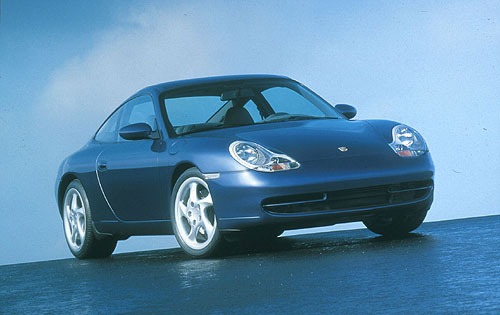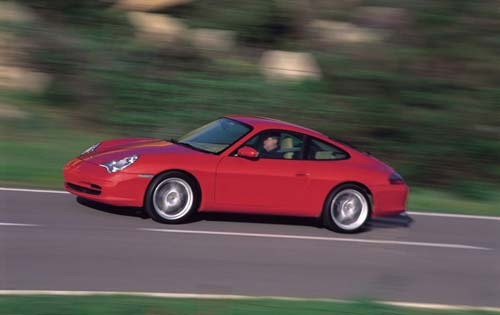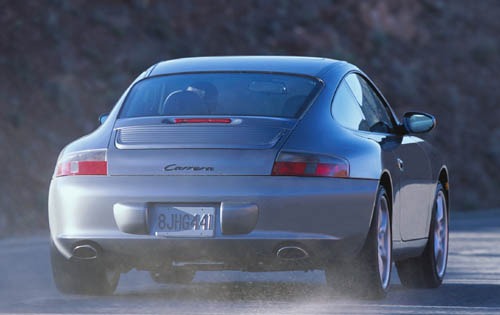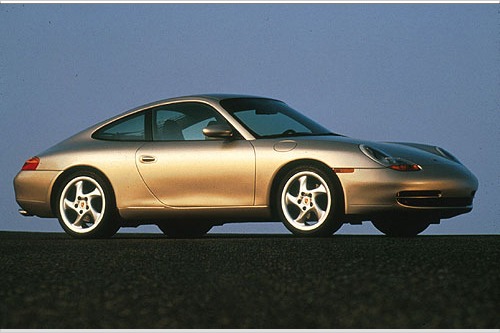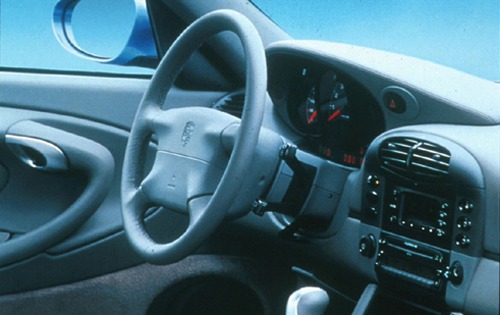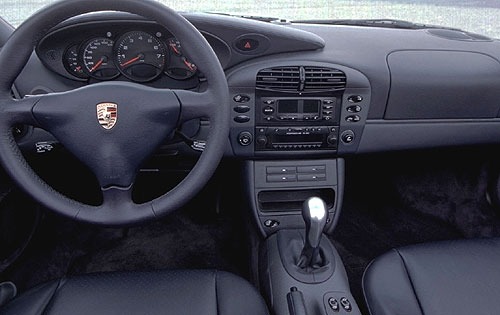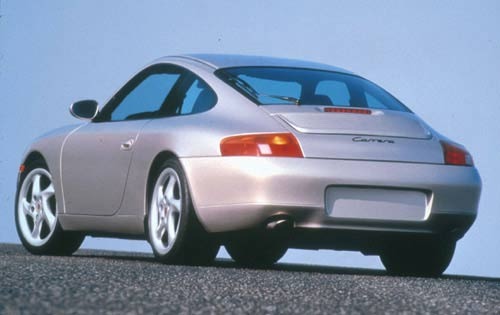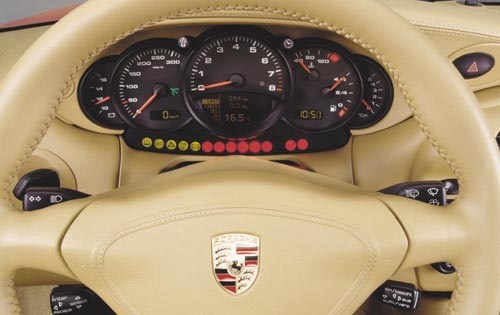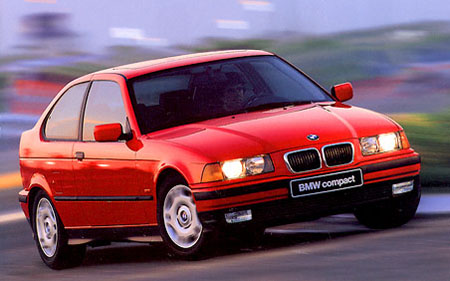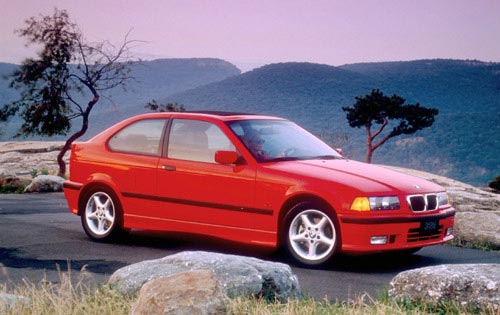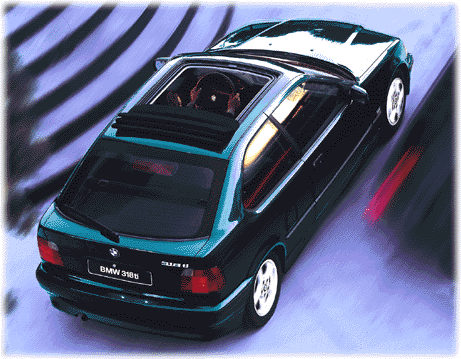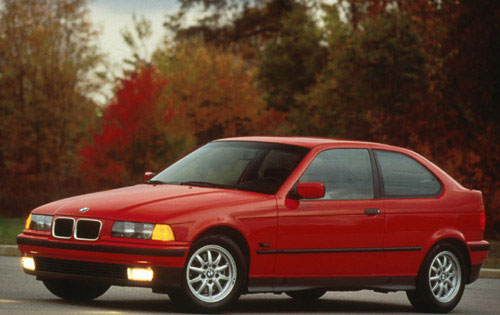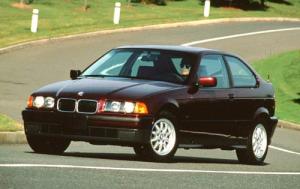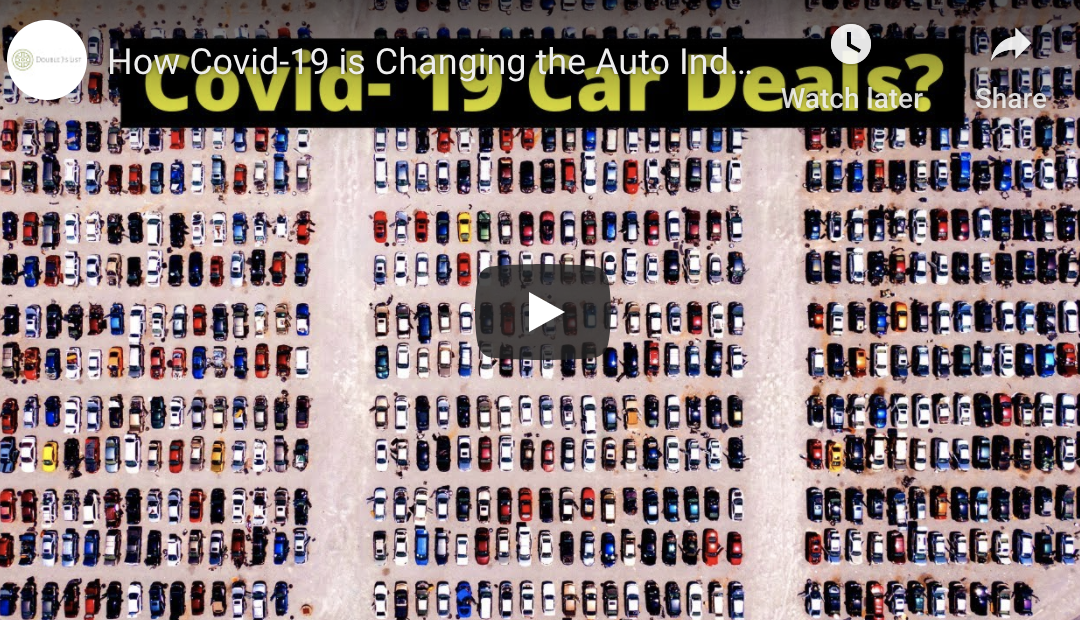


We Have Entered The Post-Dieselgate Era, And Now Is The Time To Buy A Volkswagen TDI
Volkswagen auto group likely wants you to forget about the scandal that rocked the automotive world a few years ago. Recently, Volkswagen released a software fix for the effected vehicles that resulted in a slight reduction of power and fuel economy, but now it meets the exhaust emissions requirements enforced by the Environmental Protection Agency.
For those who don’t know, Volkswagen released the “Clean Diesel” vehicles that were relatively powerful, and achieved remarkable fuel economy while producing outstandingly low engine exhaust levels. This was previously thought to be impossible, but Volkswagen had claimed they had worked tirelessly to develop a “clean diesel” engine.
What had actually happened, was a way to cheat traditional emission testing was developed. When vehicles are tested for emissions, typically they are placed on a dynamometer, where the drive wheels are on rollers, to simulate driving, while the non-drive wheels remain stationary. The engineers developed a software that noticed the cars drive wheels were turning, but the non-drive wheels weren’t, triggering the engines computer into a mode that produced less power, used more fuel, but made fewer emissions. As clever as this was, eventually independent dynamometer operators caught this odd software glitch, and the word got out; Volkswagen cheated.
I’ll spare the specifics, but in the end, it cost Volkswagen an estimated $7.3 billion US dollars in fines and costs to buy back and fix the cheating cars worldwide. Also, quite a few Volkswagen executives resigned and at least one even went to prison over the scandal. Approximately 500,000 cars were cheating emissions in the United States alone. Volkswagen offered to buy the cars back, offering thousands over what the fair market value of the vehicle was. The end result was Volkswagen rented out huge paved lots in places all over the United States to park thousands of bought-back cheating cars, such as the abandoned Silverdome in Detroit. There they sat for over a year. Nobody seemed to know what the future was for these cars, many only a year old with very low miles.

Now that the fix is out, there are a ton of low mileage TDI cars available on the used car market. This made me start searching. I searched only cars for sale under Volkswagen’s Certified Used vehicle program for two reasons; first, a lot of these cars have been sitting for a while. The Certified program offers a 2 year unlimited bumper to bumper warranty. One would think that any of the problems that could pop up in a car because it sat without running for a year or two would likely show up within 2 years of regular use. The other reason is that it is a Volkswagen, and Volkswagens haven’t had the most spotless record of reliability during the past few decades. Granted, this generation of TDI engine has been proven to be relatively reliable, it never hurts to protect yourself, at least for a couple of years. The most significant issue I have been able to find with this TDI engine is caused by the poor quality diesel fuel sold in the US, and if you pour in a little diesel fuel additive at each fill up, it seems to drastically reduce, if not eliminate the fuel system failures experienced by some owners.
Please bear in mind, I did a nationwide search on cars.com, so I encourage you to do a little searching close to home, but if you are willing to travel, the deals will likely be better.
I want an almost new car for really cheap!
First up is this 2015 Jetta with only 17,200 miles for only $12,900. What else can you find in the used car market that offers 2 year warranty that covers just about everything, with under 20,000 miles that isn’t a really basic entry-level car. The Jetta is a decently sized car, with power windows, keyless entry, heated seats and even satellite radio! It has a real back seat that can hold adults or rear facing child seats.
I want a hatchback and a little more European flair!
Well then check out this Golf! The Golfs of this era were a little more upscale than the Jettas of the same timeframe. They had a nicer dashboard, gauge cluster, and HVAC controls than Jettas. It was believed among Volkswagen enthusiast circles that the Jetta was made as a price leader for the US market, and the Golf was offered for more traditional European buyers in the US market. This one in particular has Volkswagen’s excellent Dual Clutch automatically shifted manual transmission. Low miles again with a really affordable price.
I want a huge family sedan, with limousine like back seat space and enormous trunk!
Have you looked at the Passat? These cars have a ton of space. I have heard a number of automotive journalist refer to the Passat as the German Buick. They have a comfortable ride, somewhat more premium materials and they are made in Tennessee. This one in particular is nicely optioned with VW’s excellent V-tex, which is their own brand of premium leatherette. It’s know to wear well and require less maintenance than real leather. It also has a sunroof and nice wheels.
I want a convertible!
Can you believe Volkswagen made a Beetle convertible with a diesel engine? Well they did, and they are significantly cheaper now than when they were new. When Volkswagen redesigned the New Beetle, they dropped the “New” and based it off of the significantly improved 6th generation Golf chassis. The interior is a huge improvement with great materials and cool certer gauge pod. This one has under 15,000 miles, and is less than $17,000 dollars. There isn’t a much better deal on a lightly used convertible out there. I find the silver exterior with black interior color combination on this particular car appealing also.
I want a wagon!
I actually managed to find a great deal on a 2015 Golf Sportwagen. This is significant because it is based on the 7th generation Golf chassis which is an improvement over the previous generation. Really low miles again with a super cheap price.
I want a premium 2 row SUV!
Moving a bit more upscale, I had to bump the miles up a bit and the year back a little, but this is still a significantly great deal. The Touareg is a high end platform that is shared with the Audi Q7 and Porsche Cayenne. Everything about it is pretty premium. The interior is well made, has wood and it features the 3.0 V6 TDI engine. These were really expensive when they were new. This is likely less than half of the original MSRP. It competes with the Jeep Grand Cherokee Ecodiesel, but in my opinion, this is a much nicer car, and is available for much less.
I want a car with a premium brand name!
The Audi A3 is a handsome sedan that is based on the Volkswagen Golf Chassis. It has an extremely nice interior and is perfect if you want to arrive at your destination in a premium brand. This one has under 20,000 miles and is under $20,000. New Honda Civic? Or slightly used Audi A3 TDI? It’s a compelling argument. I do think it is worth pointing out, for some reason, Audi’s certified program only offers a 1 year bumper to bumper warranty. I don’t know why a premium brand offers less warranty, but it does.
I want a 2 row SUV, but with a premium brand!
The Audi Q5 is a perfectly sized SUV that shares a chassis with the Porsche Macan. This one only has 22,000 miles and it ringing in under $30,000. It’s an extremely nice SUV.
I want a three-row SUV with a premium brand!
The same great chassis that is under the Touareg and Cayenne is right here but with a third row of seats, so you can haul around 7 people if you like. This one has some more miles on it than a lot of the others I’ve listed, but it’s a ton of vehicle for the money.
I want a diesel Porsche!
Ok, I don’t think that phrase has ever been uttered before, but you have an opportunity to own one for a very reasonable price! 42,000 miles for 32,900. It looks like Porsche has a 2 year bumper to bumper warranty and the ad mentions something about it still has powertrain warranty. I think the reason to go with the Cayenne is it an already good chassis, tuned by Porsche, with an incredible interior. I don’t think the diesel is the right choice for this application, but perhaps a drive in one could change my mind.
Is a diesel right for you?
Ok, perhaps buying a diesel Volkswagen product with a diesel engine isn’t the best decision for you, but the deals are certainly compelling. Almost every genre of vehicle is represented here, all great prices for their segment. I would have to give it serious consideration if I were shopping right now.
1999-2004 Porsche 911 (996)
The 996 generation (1999-2004) of the Porsche 911 may seem an odd choice for my normal selections of almost forgotten odd ball cars, but I need you to bear with me. Granted the Porsche 911 is one of the if not the most iconic sports cars of all time, the 996 has been regarded as the black sheep of the 911s.
The 996 was the first 911 to be liquid-cooled as opposed to the air-cooled flat-six engines that had been considered to be a defining characteristic of the 911. It also was the first and only generation since to have headlights that weren’t round. It also had an interior that contained a lot of fairly inexpensive feeling plastic materials that plagued most cars made during the same era. Finally, the M96 water-cooled engine has a very well documented issue with intermediate shaft bearing failure, which sends shards of hardened metal through the engines lubrication system basically destroying the engine.
When the 996 was introduced for the 1999 model year, Porsche purists from Stuttgart to Los Angeles were screaming bloody murder about the new 911s liquid-cooled engine. 911 fans loved the sound and simplicity of an air-cooled engine. When a rear engine vehicle is liquid-cooled like the 996, things get more complicated. Instead of a simple shroud over the engine with a belt driven fan pumping air around the cooling fins of the engine, the new engine required a radiator in the front of the car and a lot of plumbing to the rear where the engine is. Despite Porsche fans dismay, liquid-cooling was a pretty necessary step that Porsche had to make to get more power, and better emissions that the car would require to make it feasible to continue producing into the future. What the new liquid-cooled engine lost in character, it gained in performance and drivability.
Another aspect of the 996 despised by Porsche enthusiasts is the headlight design. Sometimes known as the “fried egg” headlight because of their odd shape and the amber turn signals in the early cars looked kind of like yellow yolks. Not only were they not round like a traditional 911, they looked exactly the same as the lesser model Porsche Boxster that was released 2 years previously. What the public did not understand was that the headlight was initially designed for the 996, however Porsche designers lifted the headlights from the at-the-time being developed 996 for the entry level Boxster, as they were trying to keep design and production costs down. This lead to the car world saying, “Hey, the new 911 looks like the cheap Porsche!” Needless to say, every generation of 911 since has donned relatively round headlights, and I don’t see that changing again for centuries.
All of the previous 911 to the 996 had relatively simple, but high quality interiors for their era. Air cooled 911 had simple, purposeful, and solid interiors made from high quality metals and leather. Minimal amounts of plastic and imitation materials were ever used in a 911. The 996 came along at a time when interiors had to have sculpted design attributes and expensive appearing materials. The problem was that Porsche wasn’t at it’s highest point financially at this time in history. Couple that along with the massive costs of developing a completely new liquid cooled flat-six, and the interior had to suffer. The 996 has been regarded by Porsche enthusiasts as one of the worst Porsche interiors ever. Low grade plastics finished to look like aluminum and leather, along with switches and levers that lack the tactile feel that is expected of a high-end German car left Porsche fans disappointed.
Finally, likely the most talked about issue with the 996 is the often catastrophic premature failure of the intermediate shaft bearing. Car forums and blogs around the world highlight this issue as the one and glaring reason not to ever buy a 996. It’s the ticking time bomb lurking behind the rear seats of every 996. When one of these bearings do fail, the cost is immense. If you tuned the engine off immediately after you have an inkling that the bearing has failed, you might get lucky and be able to salvage the engine block and heads that can be reused in the expensive rebuild. The likelihood of finding a used replacement engine is low as they are desirable since failures are fairly common, and if you do find one, it’s not going to come cheap.
So, with all of this doom and gloom, why am I endorsing this car? In short, it’s a 911. I can explain that statement a little bit better with a story. Back when I was in college, I was working for a large car dealership as a lot guy. One of the bonus tasks that I had was that I made a little extra money driving cars to a dealer auction that was about three hours away, and driving back a car that was purchased at the auction. The types of cars ranged from vehicles that didn’t fit on the car haulers, to sports cars that the boss didn’t trust with the car hauling company. I received a call from my boss one night just as I was leaving an evening class asking if I was available to drive a car to the auction. Me being a broke college student jumped at most any chance for extra money that I could. When he told me that it was a 2001 Porsche 911, needless to say I was quite excited. As I drove to the dealership to pick up the 911, I started to get a little bit down on my soon-to-come experience of driving a 996. Granted it was still the current generation 911 at the time, I had already known many of the gripes of the model. I was expecting the steering to be devoid of feel, and engine to be whisper quiet, and the car to generally lack character. I had driven a lot of cars at that job, and many I went in with high expectations, but left disappointed. I was anticipating this to happen with the 996. When I fired up the flat-six and left the car lot, it started occurring to me that it was not the case. Despite the lack of the noise from a fan to cool the engine, the 996’s flat six made a wonderful sound. When you brought the revs into the upper ranges, the sound is an almost spine-tingling scream that only a Porsche flat six can make. The steering to this day is the best steering I have ever experienced. You could feel every little pebble and crack in the road through the steering wheel, but at no point was it annoying. The car was surprisingly spacious and comfortable. You could easily drive the 996 across the continent in comfort, yet at the same time be in one of the best drivers cars ever made. It has a decent amount of luggage space, and according to the trip computer, I was able to get 25 miles per gallon, driving it spiritedly at times. This is what a 911 does. It strikes a no-compromise compromise between practicality and sport. 911s always have, and will likely continue to do so, if not better with every coming generation. I liken Porsche 911s to a really good microbrewery. Sometimes that awesome microbrewery comes out with a beer that isn’t as good as some of their others, but is still better than the best from other breweries.
So now that the driving dynamics have been addressed, how about the looks and interior quality. As far as looks go, you probably aren’t going to get past the non-round headlights, but as far as I’m concerned, who cares? Porsche snobs are going to turn the noses to 996s the same way they do to 944s. Whatever. The interior however is what it is. One way to make up for the low quality interior materials is to find one with the full leather option. At the time of original purchase, this was a really expensive option as it covered almost every reasonable part of the cars interior with color-matched leather. It took the inside of the cars from feeling like mid-90s VW Golf, to an Aston Martin. If you can’t deal with cheap interiors, this is your avenue to 996 ownership.
Now for the 400 pound gorilla in the room; the IMS bearing failure. Since this easily the biggest deterrent to 996 ownership, it has also made 996s among the least expensive used 911s to purchase. However, with the help from the aftermarket, there is a way to address the issue before a failure happens. Companies such as LN Engineering have developed much higher quality bearing replacements. When shopping around for a 996, you may want to only consider cars that have full service history documentation. Included in this documentation, there will likely be something in there showing the bearing was replaced for an upgraded part. If there isn’t, this can be used as a bargaining tool, as when the bearing is replaced, the clutch and rear main seal are accessible at the time and should be replaced at that time also. You are going to be facing a few thousand-dollar bill. But, like I said, you can potentially talk a seller down in price using the argument that you have a large repair ahead of you.
The whole reason I started this blog was to discuss affordable interesting cars that often get overlooked. The 996 compared to many other capable sports cars may still be more expensive, but when comparing to other Porsche 911s, they can be had for a bargain. This is the most reasonable method to get into a daily-drivable Porsche 911. If you educate yourself on the market and what to look for, you could be driving one of the best all-around practical drivers cars of all time, for less than a new Toyota Camry.
I stole photos for this post from:http://www.edmunds.com. If you are the owner of these photos and would like me to take them down, I will gladly do so. jj@doublejslist.com
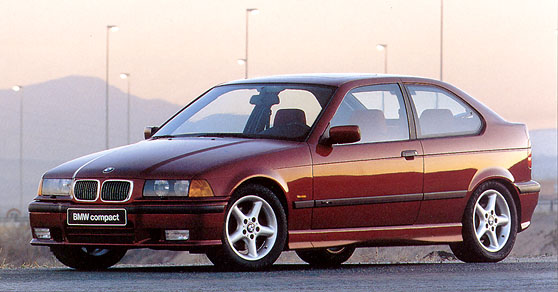
1995-1999 BMW 318ti
In 1995, BMW decided to bring it’s compact hatchback version of its iconic 3-series to the US market. This car was already a massive success in Europe, and BMW thought since it was such a hit there, that it would naturally be a sales boom here. It was quite a bit less expensive than the sedan and coupe versions already on sale here.
To get the base price down, the entry level model had a cloth interior, steel wheels with plastic wheel covers, and was only offered with a four cylinder engine. The biggest difference, other than the body style, was the rear suspension. The semi-trailing arm setup was almost the same as what was used in the previous generation 3-series. Not only did this save on cost over the new multi-link setup that was used on the sedan and coupe, it also was more compact, allowing for more cargo space in the smaller hatchback version of the 3-series. Personally, I am not sure if using the older suspension was a bad thing. The previous generation 3 series is still to this day regarded as one of the best driver’s cars of all time, and was again lifted for use in BMW’s sports car, the Z3. It helped give the 318ti its own personality in the lineup.
Throughout the years it was on the US market, the most interesting trim level was the Sport. It had seats with larger bolsters, sport suspension, fog lights, a steering wheel with BMW’s “M” logo at the bottom, and only on 1995 models, you could get a limited slip differential. Another item worth mentioning is the “California Roof” option. Starting in 1996, you could get an electrically folding canvas roof that created a much larger opening than a standard sunroof. A friend of mine had one. It was prone to leaking, but was so cool, that the leaking was easily overlooked.
Unfortunately, the 318ti was not the sales success here in the States, as it was on the other side of the pond. BMW to this day claims that the hatchback style is not popular with Americans. I beg to differ. In Europe, BMW offered many different engine choices. Here, all we had were 1.8 and 1.9 liter 4 cylinder twin cam engines, that produced nearly the same power. Europe had the option of a 6 cylinder that would make an already great car even better. I am not sure if the Germans thought Americans hate powerful small cars, or if they were afraid of the little hatch stealing sales away from the sedan and coupe that already had a strong following. All I know is that BMW still refers to this car when it comes to selling hatches here. This is why we have the mutated looking 1 series coupe, and not the handsome 5-door hatch that Europe gets to enjoy.
However, I’d still love to have one of these cars. The fact that it sold so poorly makes it unique and quirky, yet not so quirky that it isn’t a good car. It’s far more practical than the coupe, and is just more interesting than the standard 3 series. This is why it is on my list.
I stole photos for this post from: http://www.usautoparts.net http://www.theautochannel.com http://www.stusviews.net http://www.edmunds.com If you are the owner of these photos and would like me to take them down, I will gladly do so. jj@doublejslist.com


